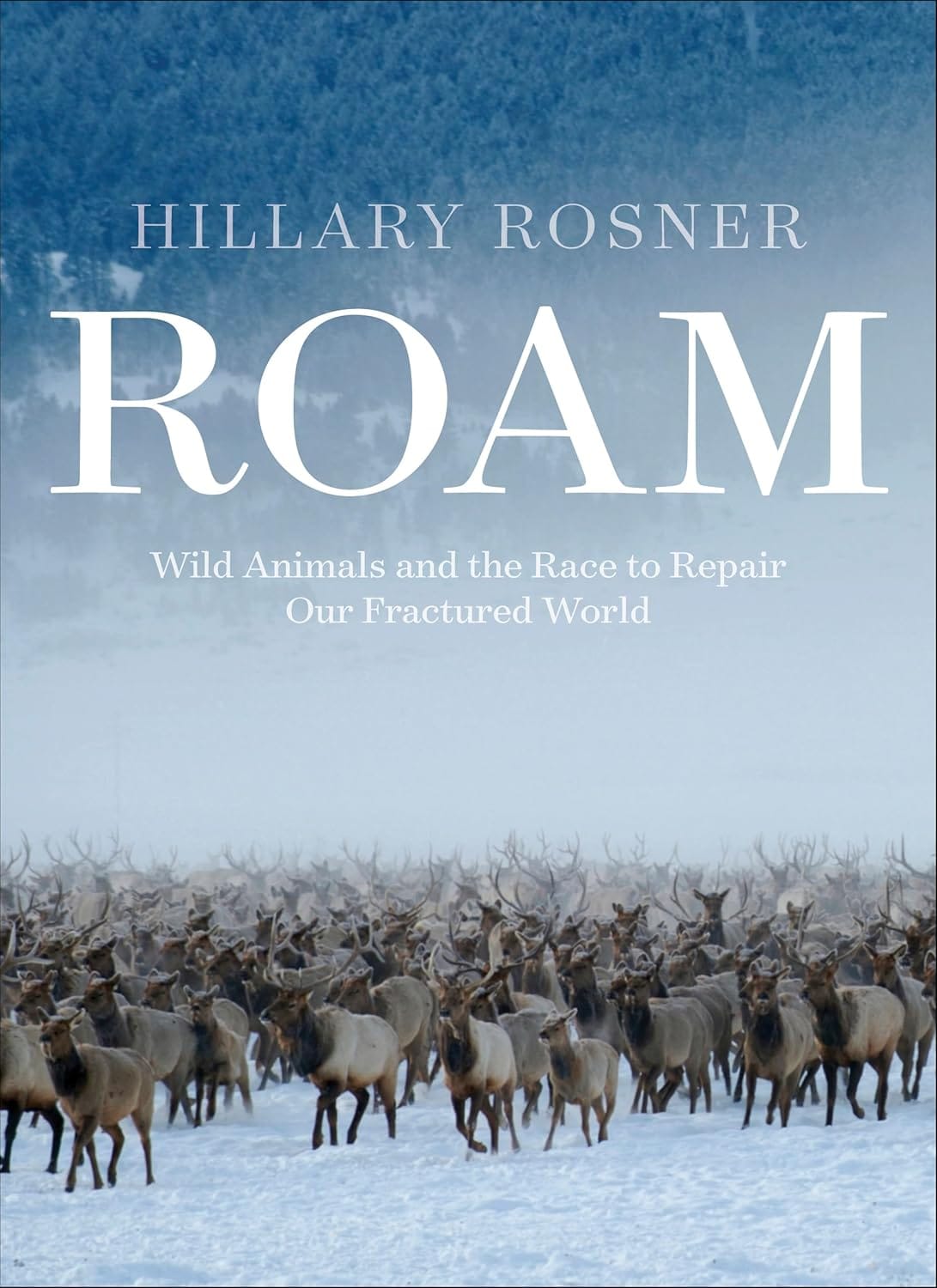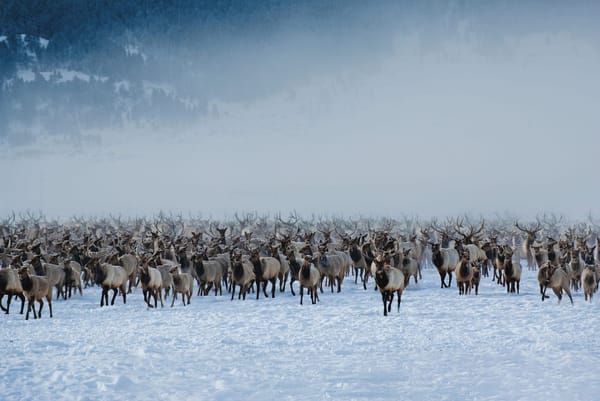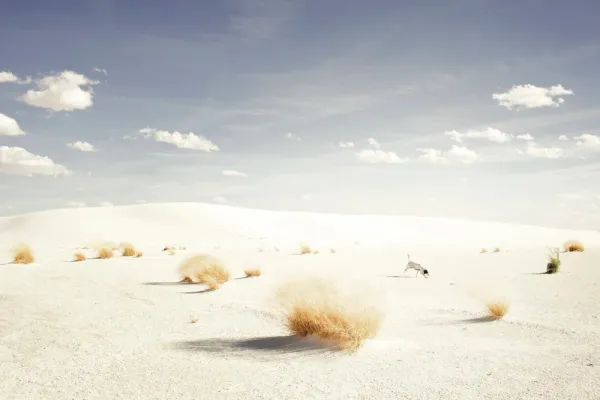One Small Glimmer of Hope
News of the recent formation of the bipartisan Senate Stewardship Caucus could (eventually) be a game changer for public lands legislation
Welp, we’ve entered the fifth week of the government shutdown. Both sides are hunkered down in their entrenched positions, the House is still largely out of session, and we seem destined to blow by the previous shutdown record of 35-days, an ignoble mark set during the 2018-2019 budget stalemate. No negotiations are currently underway to try to settle the dispute.
The media seems to have largely moved on, as well. Shutdown coverage dominated cable news shows and front pages in the week before and immediately after the October 1 budget deadline. A month in, however, there are simply too few new developments to talk and write about. Just before I began drafting this week’s newsletter, I checked the New York Times homepage and had to scroll more than halfway down—past the news of President Trump’s trade summit in China, past Hurricane Melissa, past the New York City mayoral election, past the Dutch presidential election, past the Louvre art heist, past the Surgeon General nominee going into labor, past an essay on the President’s architectural plans—before finally encountering the first shutdown-related headline: “A Month Without Data Muddles the U.S. Economic Picture.”
But while the government remains shut, policy changes to America’s public lands continue apace, and a lot of them are... not good. Most of our national parks remain open with skeleton crews, and the damaging effects are starting to pile up. Utah Senator Mike Lee recently put forward a bill that would effectively militarize established wilderness areas within 100 miles of our northern and southern borders. The Senate is moving ahead with a resolution that would open millions of acres to oil and gas drilling in Alaska’s National Petroleum Reserve, vital habitat for polar bears and caribou migration. And the fast tracking of new oil and gas leases in other previously protected areas representing critical wildlife habitat and hunting grounds continues at breakneck speed.
Unfortunately, I could go on, and with so much happening all at once, it's only natural to feel overwhelmed and demoralized. I know I do sometimes. (Okay, oftentimes.) That feeling is only compounded by the fact that so many policy changes are being fast tracked without adequate public comment periods.
In this political climate, it is therefore essential to celebrate the occasional glimmer of hope. And we got one of those glimmers this week, with the announcement of the bipartisan Senate Stewardship Caucus. On Monday, eight senators, led by Republican Tim Sheehy of Montana and Democrat Martin Heinrich of New Mexico, announced a formal organizing body created to “advance bipartisan efforts aimed at protecting and expanding access to public lands and waters, recovering wildlife, and restoring habitat.” The other caucus members are Catherine Cortez Masto (D-Nev.), Thom Tillis (R-N.C.), John Hickenlooper (D-Colo.), Steve Daines (R-Mont.), Chris Coons (D-Del.), and Katie Britt (R-Ala.).

This development might seem small given the laundry list of public lands threats I just catalogued. But if you’re playing the long game—and sound stewardship is nothing, if not a long game—the formation of the new caucus could have enormous positive impacts in the future. Conservation and sustainable stewardship of public lands have historically enjoyed bipartisan support in U.S. politics, but in an era of hyper-polarization, even those issues are threatening to divide us. Establishing a caucus effectively pushes back against that impulse, and it gives cover to politicians on both sides of the aisle who want to cooperate.
You don’t have to look very far back in history to understand the critical role a bipartisan caucus can play in defeating bad public lands legislation. Last May, Representatives Ryan Zinke (R-Mont.) and Gabe Vasquez (D-New Mex.) formed the Public Lands Caucus in the House. At the time, a provision in the House version of the Big Beautiful Bill would have authorized the sale of about 500,000 acres of public lands in Nevada & Utah. By coordinating across party lines, the newly formed caucus helped apply pressure that led to removal of that language before the bill went to the Senate. Ever since then, public lands advocates have wondered if members of the Senate would organize their own, corollary group.
We got that on Monday, and it’s a big deal. A strong caucus can not only help defeat bad policy proposals, it can be instrumental in creating solid conservation-minded legislation. “Everything that’s durable,” said Senator Heinrich at the press conference announcing the caucus, “everything that’s lasted the test of time in the conservation space has been bipartisan.”
Indeed, nearly every piece of landmark conservation legislation—going all the way back to 1937, to be exact—represented a bipartisan effort.
- The Pittman–Robertson Act (1937) placed an excise tax on guns, ammunition, and hunting gear, and 88 years later it continues to funnel that money directly to states for wildlife habitat restoration, research, and hunter education.
- The Dingell–Johnson Act (1950) taxed fishing tackle, rods, and boat fuel to fund aquatic habitat restoration and fisheries management. It’s still in effect, too, distributing over $600 million annually to state conservation programs.
- The Land and Water Conservation Fund (1964), also created with bipartisan support, established offshore oil and gas royalties to fund conservation and recreation access. It was made permanent in 2019 with the John D. Dingell, Jr. Conservation, Management, and Recreation Act, another major bipartisan win, with a 92 to 8 vote in the otherwise divided Senate.
- The Great American Outdoors Act (2020) is one of the most consequential conservation bills in a generation, creating, among many other things, a new restoration fund to tackle the massive maintenance backlog across federal land management agencies. It was signed by President Trump with support from both parties.
That's without even mentioning the Wilderness Act, the Endangered Species Act, the Clean Water Act, or the National Environmental Policy Act (NEPA).
For the last 40 years, we've endured the limitations and ephemeral nature of land-use decisions set by the Executive Branch. Just look at the tussle over opening up the Arctic National Wildlife Refuge to oil and gas exploration. It's been like watching the world's longest tennis rally.
In 1987, President Reagan's Interior Department officially recommends to Congress that drilling be allowed in the refuge's coastal plain. During President Bill Clinton's two terms, he consistently rejected Republican-led efforts to open the ANWR coastal plain. President George W.Bush is inaugurated in 2001 and makes plans to open up ANWR. President Barack Obama comes into power and stymies those efforts. Donald Trump becomes president, and opens ANWR back up. Joe Biden takes the Oval Office and shuts it back down again. Trump returns to power in 2025, and drilling is now back on the table.

It's maddening—for both sides. And ANWR is just one example among many. President Trump's plans to rescind the Roadless Rule and the Public Lands Rule both undo policies made by his Democratic predecessors. We can't end this cycle with more executive orders. The only path to lasting policy is through bipartisan legislation.
Congress already has the immensely effective Sportsmen’s Caucus, founded in 1989, which grew out of the hunting and angling world. Its agenda centers on protecting America’s sporting heritage, ensuring that public lands and waters remain open for hunting and fishing, and that user fees continue to fund conservation through programs like Pittman-Robertson. It’s one of the largest and most durable bipartisan caucuses in Congress, with a track record that includes shaping the Great American Outdoors Act and other major conservation wins.
The Senate Stewardship Caucus is a little different. Its focus is broader, extending beyond recreation to include habitat restoration, wildfire resilience, water management, and ecosystem health. Where the Sportsmen’s Caucus defends access, the Stewardship Caucus aims to build a new, bipartisan ethic that reframes conservation as a shared duty rather than a political dividing line.
Even the decision to call the new group the Senate Stewardship Caucus—rather than a “Public Lands” caucus—seems like a canny move, one that acknowledges the current danger of politicizing public lands issues. The word stewardship implies care, responsibility, and inheritance rather than regulation or ownership. In a polarized era, it’s language that can unite ranchers, recreationists, and conservationists under the same banner. By emphasizing stewardship over jurisdiction, the senators are framing conservation as shared duty rather than partisan agenda. I'm guessing it's also an intentional effort to make room for politicians who might otherwise avoid anything labeled “environmental.”
These are early days for the newly formed caucus. At the press conference, there were no announcement about new stewardship legislation in the works. None of the senators who were present took a stand on the current, contentious public lands policy positions of the current administration. We don't know whether the group of eight can successfully recruit more members to increase it's influence. And it will require real-life public-lands-and-waters legislation battle to truly test how durable this coalition can be (might I humbly suggest that the caucus immediately weigh in on Senator Lee's Border Lands Conservation Act as a test?).
Still, don't downplay the significance of this week's announcement. At a time of unprecedented public lands threats and extreme partisanship, the Senate Stewardship Caucus offers a ray of hope.

Three Questions With... Hillary Rosner
In her new book, Roam, ($32; Patagonia Books), award-winning environmental journalist Hillary Rosner tackles the increasingly thorny issue of animal migration. Rosner traveled the globe—and to some of America's most iconic public lands—to explore the creative strategies conservationists, public land managers, and private landowners are implementing to provide wild animals critical opportunities to move in a world increasingly carved up by roads, fencing, and myriad other barriers, including human presence itself. It's a timely topic. As Rosner pointed out, road collisions with deer rise by 16% in the week following the fall time change—this weekend! Here is a short excerpt from our conversation.
CHRIS KEYES: There’s a stat in the book that just blew my mind: there are 600,000 miles of fencing crisscrossing the U.S. Is that mapped?
HILLARY ROSNER: There are certainly efforts to map all of that, but part of the issue is that you can't see fences on satellite imagery of an area. Even in these places that we think of as being very wide open, like those lands in the greater Yellowstone ecosystem, are just covered in fencing. For some species, those fences don't matter at all, but for a lot of species, they do.
So conservationists are often planning blind, because they don't have any understanding of where the fencing is.
Right.
And because those fences tend to be exactly in the areas that have the lowest human footprint index, they are exactly in the places that we think are wide open. But this issue has prompted all kinds of interesting work. I went and did a fence removal, a volunteer morning with the Absaroka Fence Initiative [in Wyoming]. There were people there from federal agencies and state agencies and hunting groups and conservation groups—and everyone could get behind it because this fencing we were there to remove was put up hundreds of years ago. No one's using it anymore. And all it's doing is blocking wildlife passage. And so it just seemed like a great, no-brainer: let's just take it down. There are volunteers who want to do this kind of work.
And there are other options. Some ranchers may still need a certain fence. But given the choice, they'd love to make it more wildlife friendly—make the bottom rung higher and the top rung lower. There are ways to make fences more wildlife friendly, but it takes funding. It takes money. Everything's about money.
Speaking of money, in the Author's Note that opens the book, you mention that a few of the federal conservation programs that you write about, ones that specifically make migration safer for animals, have recently been eliminated. Could you highlight a few?
Well, yeah, the bipartisan Infrastructure Bill [passed in 2021] set aside $350 million for wildlife crossing structures over highways. Much of that money has been clawed back. A lot of that was for projects that were already under construction. And I really want to make the point that these things should not be political. There are projects [being cut] that everybody benefits from. Like the wildlife crossing structures. Nobody wants to hit a deer going 80 miles an hour on the interstate.
Click here to read the entire interview. You can buy a copy of Roam at Patagonia.
The Good, the Bad, and the Ugly
Every Friday, our team shares critical stories about public lands from around the internet. This list could be exhaustive and exhausting, but our intent is to inform, not overwhelm. Instead, we choose three to five important stories you should be aware of—including at least one piece of good news.
The Good: A River Restoration in Oregon Gets Fast Results: The Salmon Swam Right Back "After being absent for more than a century, Chinook salmon have returned to their historic spawning grounds at the headwaters of the Klamath River in Oregon. Oregon wildlife officials said this month that the fish had made it past a key milestone, a long lake, and had reached the tributary streams that make up the river’s headwaters. The announcement came roughly a year after the last of four major hydroelectric dams on the Klamath was demolished. "
The Bad: Shutdown, staffing cuts taking a toll at National Park Service "Concerns are mounting amid reports of damaged resources, reduced maintenance, and visitor safety issues at the 63 national parks and 370 other units, including national memorials and historic sites, managed by the National Park Service. More than 450 former NPS employees, including two past directors of the agency and more than 90 former park superintendents, last week urged Interior Secretary Doug Burgum to close all the national parks until the government reopens.”
The Ugly: As Trump Moves to Repeal Public Lands Rule, Government Shutdown Shuts Out Public Participation "When the Biden Administration first proposed the Public Lands Rule in 2023, the BLM provided multiple ways for the public to engage, including three in-person meetings, two virtual meetings, fact sheets, and an FAQ resource online. The Biden-era agency also extended the comment period by 30 days, giving people on all sides a full 90 days to weigh in. 'The contrast between the Biden and Trump administrations’ engagement couldn’t be greater,' Matsumoto said. 'This is equally harmful to all stakeholders and constituencies who care about the Public Lands Rule, whether they like the rule or not.'"




